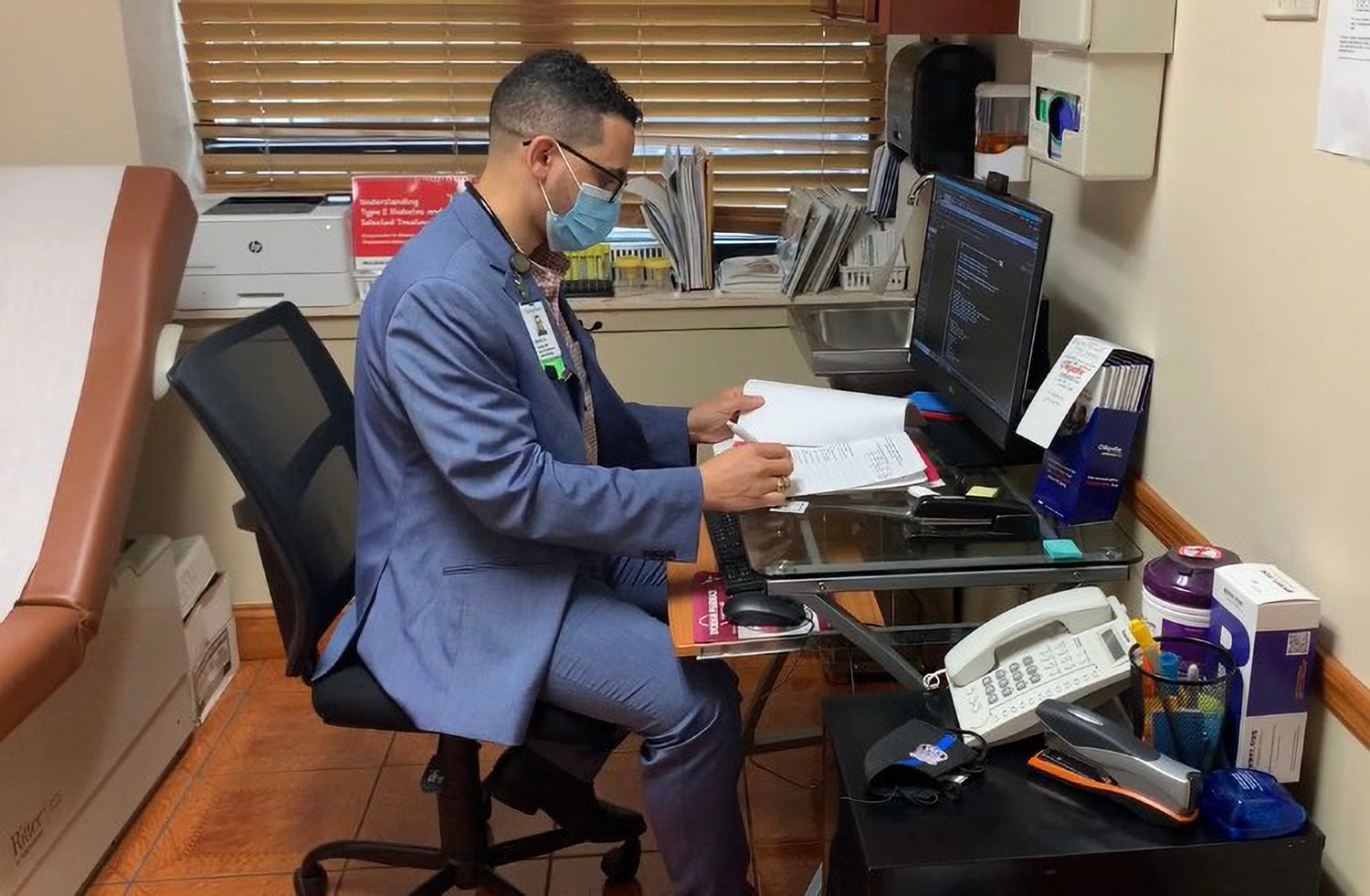Montefiore tackles diabetes through education
Medical center provides programs to teach people about chronic disease
Recognizing the dangers of a diabetes diagnosis is only the beginning for millions of Americans.
That is why hospitals like Montefiore medical center is giving patients and doctors a chance to educate others during national diabetes month in November and the rest of the year. The Centers for Disease Control and Prevention claims diabetes is an epidemic with more than 37 million people in the U.S. suffering from it .
In New York, over 1.6 million of adults — 10.5 percent — are diagnosed with diabetes. And yet less than half of one million don’t even know it.
That’s why Montefiore medical center created a series of workshops to help educate people about diabetes and how to maintain a healthy lifestyle. Nurse practioner Edwin Torres works in the hospital’s outreach program that sends providers to communities.
The Fleischer Institute for diabetes and metabolism on the Einstein campus in Morris Park is a cutting-edge research division in the hospital for a basic, transitional and clinical care for patients with diabetes and metabolic disorders.
“I have a very sweet deal. I get to focus on taking care of patients with diabetes,” Torres said.
Torres loves his job. He visits specialty clinics where people are already diagnosed with diabetes in the Bronx, Manhattan, and Washington Heights.
When general physicians are unable to continue helping their patients treat their diabetes, a referral is sent to Torres and his colleagues. Then he can meet patients where they live.
“Latinos and African Americans have a higher prevalence of developing diabetes than Caucasians,” Torres said.
According to 2020 census data, there was roughly 50 percent Hispanics living in Riverdale, Fieldston, and Kingsbridge. Black African Americans made up 12 percent.
Out of all the city’s boroughs, the Bronx adult population has the highest prevalence of diagnosed diabetes, with 16 percent.
In contrast, the financial district in Lower Manhattan, is in the single digits.
“Patients ask me, what’s worse? Type 1 or Type 2, but I don’t think one is worse than the other,” Torres said.
He thinks the biggest hurdle for patients is managing it. If patients can manage type 1, Torres has full confidence that patients can manage type 2.
“The problem is when people think it will go away on its own, and then we allow for the high blood sugar to cause organ damage — the word diabetes, it means high blood sugar,” Torres said.
But is type 2 reversible?
U.S News & World Report says, “Short answer: Yes. Long answer: It depends. And if it’s possible, it can be a tall order.”
Increasing research finds that a person might be able to achieve remission.
The CDC’s Division of Diabetes is dedicated to putting science into action through programs to help people prevent Type 2. That is when the body doesn’t produce insulin well and can’t keep blood sugar at normal levels. About 90 to 95 percent of people have Type 2, which usually develops over time.
One way to manage diabetes is to exercise at least 20 minutes daily because that allows a person to sweat and clear sugar out of the body. But that doesn’t mean you can just take a short walk and call it a day, Torres said.
Another way to treat diabetes is by eating healthy. Stay away from sugar or other triggers to raise blood sugar, Torres said.
Then of course there is medication. According to the National Institutes of Health, the first-line drug is metformin for Type 2.
Approximately 5 to 10 percent of people are diagnosed with Type 1 diabetes, which is caused by an autoimmune reaction where the body attacks itself. As a result, the body stops making insulin.
On Nov. 2, Montefiore Moses Campus had a discussion with associates and others to learn about programs within the hospital that are available to Montefiore associates for diabetes-specific and general health.
On Nov. 16, Bethel senior center in Jerome Park had an educational workshop and an overview of diabetes to better understand symptoms.
Torres said it is important for people over 35 to get screened for diabetes. It is best to find out early to delay or prevent complications.
“A chronic disease is very scary, but if we manage it well, it doesn’t need to be scary,” he said.






